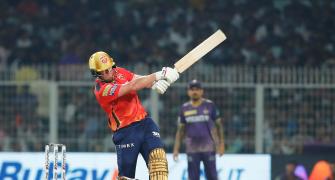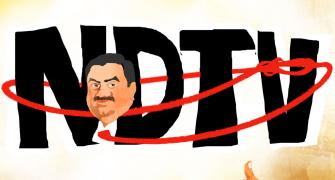The desire to reap higher risk-adjusted returns from diversification into assets that offer low or even negative correlation with equities and bonds, has been the driving force behind the greater asset allocation for art in recent times.
With an annual return of more than 50 per cent in the last five years, Indian contemporary art has 'arrived' as an asset class, and done better than the alternatives available.
Research shows that the low correlation with other financial assets renders art, or art in the form of a diversified art fund, a desirable asset class.
So, much to the horror of the art intelligentsia, a number of art funds have been launched recently, to cash in on the meteoric price rise. The Yatra Art Fund (Sakshi Art Gallery), The Osetta Fund of Osian's (Neville Tulli) and Kotak's Art Fund are three art funds in the market at the moment.
Does their entry signal a peaking of the market in the near term? Because of the current global economic uncertainties, from Bernanke to Brent, are we going to see art prices softening in the next six to eight months?
So far, collectors have shrugged off such doubts. At Sotheby's Russian art sale in London on May 31, Ivan Aivazovsky's painting of a sunset on the Dnieper river fetched a record L1.7 million ($3.3 million), just as the benchmark Russian stock index posted its biggest monthly drop in two years.
On May 23, Francis Newton Souza's Amsterdam Landscape raised £624,000, or eight times Sotheby's estimate, at its Indian sale.
A day before that, the Bombay Sensitive Index fell more than 10 per cent before rebounding. And in June, The New York Times reported that Gustave Klimt's 1907 portrait of Adele Bloch-Bauer, wife of a Jewish sugar industrialist, Viennese art circle hostess extraordinaire and possible lover of Klimt, had sold privately for $135 million, becoming the highest price ever paid for a painting.
"The work of art is a symbol, a visible symbol of the human spirit in its search for truth, freedom and perfection," Alfred H Barr Jr, the Museum of Modern Art's founding director, once said. He also wrote in 1929, "In the history of art, as in more materialistic matters, money talks vividly. Let us not be ashamed to listen."
Traditionally, Indian contemporary art has been held by a few collectors and galleries, and has therefore been fairly concentrated in its distribution.
Today,
the balance of power seems to be shifting to investors, financial institutions and art funds. What's the difference between a collector and an investor?
"The collector wants the work of art more than he wants the money," said Stephen A Wynn, the Las Vegas casino mogul and one of the world's top 10 art collectors. As long as we have more collectors in the market than investors, art will continue to be a "good investment".
The demand-supply equilibrium will be maintained at higher prices as long as there are increases in demand despite supply extensions. But at these values every collection is a play between pure passion and profits. Today, most collectors are not just putting a collection together for their own taste, but also for the financial value they may gain.
Art has been considered difficult to value, which means that a collector's level of expertise can contribute significantly to deciding how much he or she is willing to pay. A lack of efficient markets, varying opinions about worth and overall illiquidity can make a collector's job more difficult; and to top it all, real values are realised only through actual sales because each work is unique.
In my opinion, the 'free lunch' (in the form of indiscriminate and accelerated increase in prices) seems to be over and buyer discretion is creeping into a marketplace that is still in its infancy and evolving. At $400 million, the Indian contemporary art market is still a small subset of the trillion dollar global art market; so growth in volume in art
auction sales should continue to be strong.
However, we are likely to see sideways or downward movement in the prices of certain artists who have been "over-bought", or in certain periods of an artist's work which are not considered the "best period" for that artist -a phenomenon we have yet to experience in the Indian contemporary art market that has so far seen an art price index climb sharply.
For a collector who is relatively insulated from premiums and price movements, the satisfaction from the intangibles that come with collecting art far outweigh the tangible financial appreciation.
For the investor, let's hope that Adam Smith's invisible hand gets the upper hand over Bernanke's not so invisible one, even in the short term.
Do you want to discuss stock tips? Do you know a hot one? Join the Stock Market Investments Discussion Group








